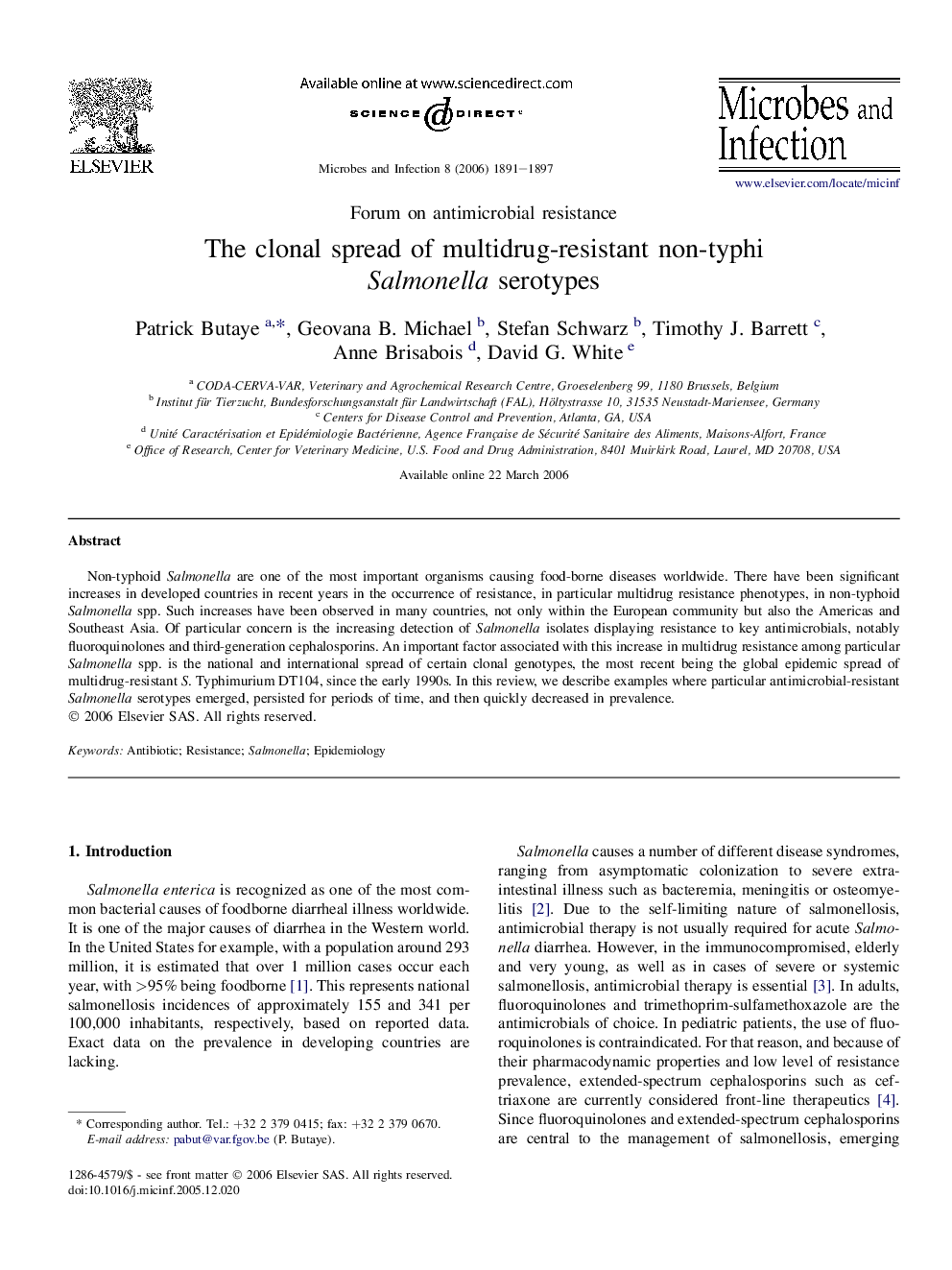| Article ID | Journal | Published Year | Pages | File Type |
|---|---|---|---|---|
| 3415866 | Microbes and Infection | 2006 | 7 Pages |
Non-typhoid Salmonella are one of the most important organisms causing food-borne diseases worldwide. There have been significant increases in developed countries in recent years in the occurrence of resistance, in particular multidrug resistance phenotypes, in non-typhoid Salmonella spp. Such increases have been observed in many countries, not only within the European community but also the Americas and Southeast Asia. Of particular concern is the increasing detection of Salmonella isolates displaying resistance to key antimicrobials, notably fluoroquinolones and third-generation cephalosporins. An important factor associated with this increase in multidrug resistance among particular Salmonella spp. is the national and international spread of certain clonal genotypes, the most recent being the global epidemic spread of multidrug-resistant S. Typhimurium DT104, since the early 1990s. In this review, we describe examples where particular antimicrobial-resistant Salmonella serotypes emerged, persisted for periods of time, and then quickly decreased in prevalence.
